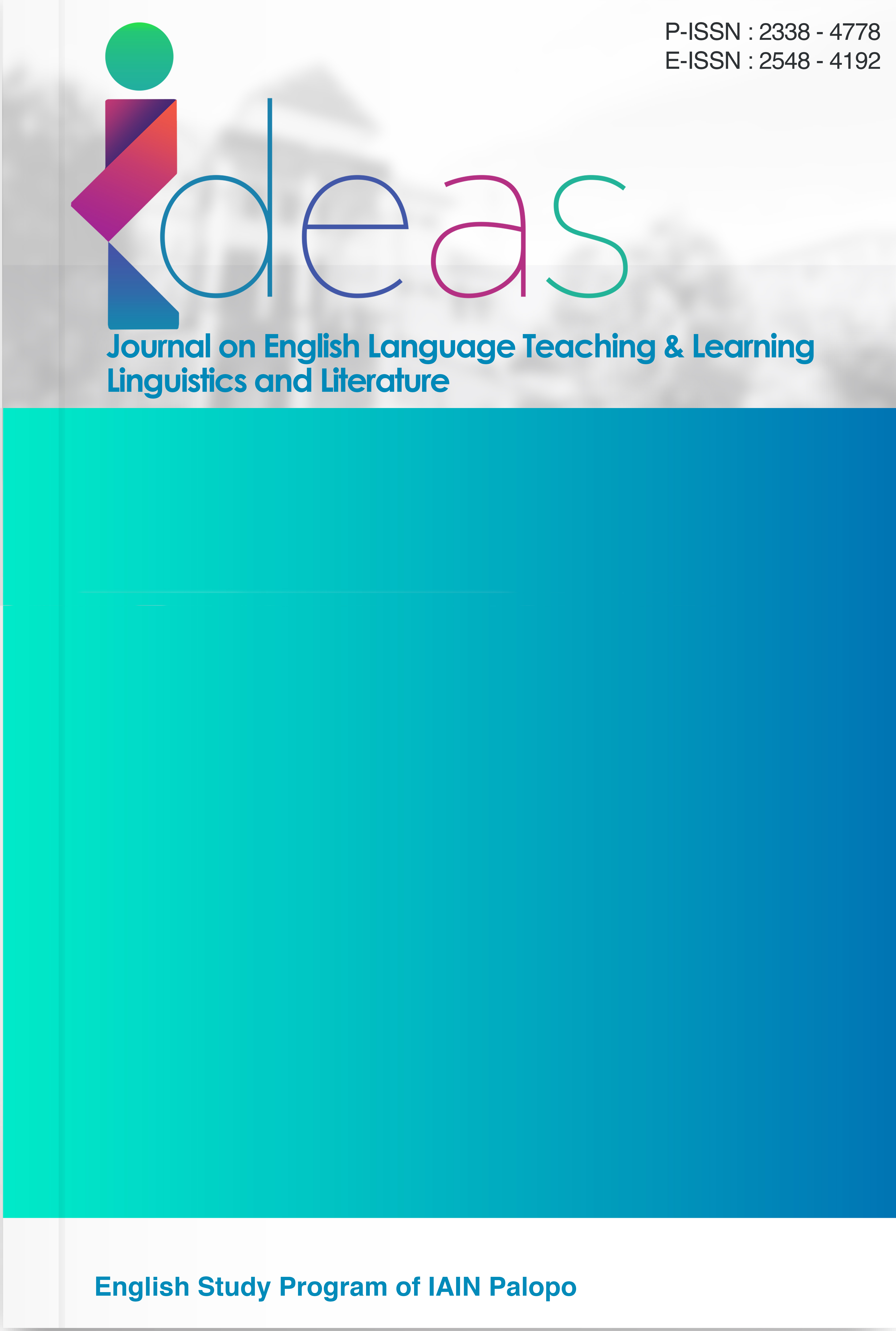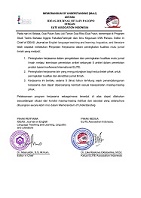An Analysis Code Switching Found in “Bestie” Series Season
DOI:
https://doi.org/10.24256/ideas.v13i2.7872Keywords:
code-switching, bilingualism, podcast, Bestie Series, sociolinguisticsAbstract
This study aims to explore the use of code-switching in Bestie Series Season 1, with a focus on how bilingual speakers alternate between Indonesian and English in informal conversations. The data were sourced from eight episodes of the series, which features spontaneous, bilingual dialogues. Using a descriptive qualitative approach, the conversations were transcribed and analyzed to identify types of code-switching. The analysis was guided by Poplack, (2001) classification, which includes intra-sentential, inter-sentential, and tag-switching. The findings reveal that intra-sentential code-switching is the most frequently used (58.75%), followed by inter-sentential (30%) and tag-switching (11.25%). These results suggest that code-switching in the series is used strategically not only to express emotions and reinforce identity, but also to increase clarity and engagement. In the context of informal digital media, code-switching serves as a flexible and expressive communication tool that reflects the dynamic nature of bilingual interaction.
References
Arafah, B., Thayyib, M., Kaharuddin, K., & Sahib, H. (2020). An anthropological linguistic study on the Maccera’Bulung ritual. Opción: Revista de Ciencias Humanas y Sociales, (27), 94.
Arafah, B., Sirajuddin, J., Thayyib, M., Room, F., Takwa, T., & Anayati, W. (2023). Emotional Management of Defoe's Robinson Crusoe's Main Character. Journal of Language Teaching and Research, 14(5), 1414-1421.
Carol, M.-S. (1993). Duelling languages: Grammatical structure in code-switching. Clarendon, Oxford.
Cenoz, J. (2013). Defining multilingualism. Annual Review of Applied Linguistics, 33 (March 2013), 3–18. https://doi.org/10.1017/S026719051300007X
Darnell, R. (1975). Reviewed Work(s): Sociolinguistic Patterns by William Labov. Language, 51, 1008. https://doi.org/10.2307/412715
Fatmawati, D. P., Rohimah, D., Fazafaza, E., Nasywa, J., & Sarosa, T. (n.d.). Unveiling the Need of Synonym in Code Mixing in the Movie ‘Yowis Ben Finale.’ PRASASTI: Journal of Linguistics, 9(1), 12–24.
Gumperz, J. J. (1982). Discourse Strategies. In Studies in Interactional Sociolinguistics. Cambridge University Press. https://doi.org/DOI: 10.1017/CBO9780511611834
Masruddin, M., Amir, F., Langaji, A., & Rusdiansyah, R. (2023). Conceptualizing linguistic politeness in light of age. International Journal of Society, Culture & Language, 11(3), 41-55.
Poplack, S. (2001). Code switching: Linguistic. International Encyclopedia of the Social & Behavioral Sciences, July, 2062–2065. https://doi.org/10.1016/b0-08-043076-7/03031-x
Pradina, F. A. (2021). Code-Switching as Media Speech: Evidence in an Indonesian Podcast. Haluan Sastra Budaya, 5(1), 1. https://doi.org/10.20961/hsb.v5i1.44701
Sofaer, S. (1999). Qualitative methods: what are they, and why use them? Health Services Research, 34(5 Pt 2), 1101.
Thayyib, M., Arafah, B., Manda, M. L., & Rahman, F. (2020). Ideological Dimension in Bunga’lalang: An Anthropological Linguistic Study. ELS Journal on Interdisciplinary Studies in Humanities, 3(3), 467-475.
Wulandari, A. (2021). Code Switching and Code Mixing Study in the “Hitam Putih” Talk Show Program. Vivid: Journal of Language and Literature, 10, 1. https://doi.org/10.25077/vj.10.1.1-5.2021
Wulandari, R., Khalawi, H., & Hafidah, A. S. (2023). Sociolinguistic study of code-switching in the Indonesian film series “My Nerd Girl.” Proceedings of the 3rd English National Seminar, English Education Study Program, STKIP PGRI Pacitan, 215–219.
Yanti, L., Thayyib, M., & Said, Y. R. (2024). Beyond K-Pop: A Discourse Analysis on an ELT Research Article by Korean Authors. IDEAS: Journal on English Language Teaching and Learning, Linguistics and Literature, 12(2), 2636-2645.
Downloads
Published
Issue
Section
Citation Check
License
Copyright (c) 2025 Gede Rendy Adnyana Putra, I Komang Sulatra

This work is licensed under a Creative Commons Attribution-ShareAlike 4.0 International License.
Authors retain copyright and grant the journal right of first publication with the work simultaneously licensed under an Attribution-ShareAlike 4.0 International (CC BY-SA 4.0) that allows others to share the work with an acknowledgement of the work's authorship and initial publication in this journal.
Authors are able to enter into separate, additional contractual arrangements for the non-exclusive distribution of the journal's published version of the work (e.g., post it to an institutional repository or publish it in a book), with an acknowledgement of its initial publication in this journal.
Authors are permitted and encouraged to post their work online (e.g., in institutional repositories or on their website) prior to and during the submission process, as it can lead to productive exchanges, as well as earlier and greater citation of published work (See the Effect of Open Access)




